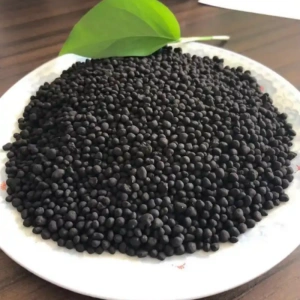Theoretically, plants can’t tell the difference between nutrients supplied by the granular and liquid fertilizers, but they both have advantages depending on the farming application.
There are several ways to categorize fertilizers. One logical way to look at them is as “granulars” and “liquids”. For the purposes of this comparison, anhydrous ammonia (technically a liquid) will not be considered.
Dry fertilizers are generally incorporated into granules. Fertilizer blends can be created by mixing individual granular fertilizer of known analysis (e.g., 46-0-0, 18-46-0 and 0-0-60) in the proper ratio to create the desired blend. Dry fertilizers can be ground applied as a broadcast; applied at planting as a band, often placed 2 inches to the side and 2 inches below the seed (2-by-2 placement); or applied as sidedress and cultivated shallowly into the soil. When farmers have access to custom blended granular fertilizer, they can fine-tune their crop fertility program and potentially improve crop production efficiency. If all goes well, this can result in more profitable crop production.


Liquid fertilizers have greatly increased in popularity in recent years. They can be either ground applied or foliar applied. Liquids can be broadcast, used in a band application at planting and as mid-season sidedress. When foliar applied, the plant nutrients are absorbed through the leaves and are more readily available for plant use than if ground applied. However, the availability of foliar applied nutrients is short-lived and not continuous for the rest of the growing season. Foliar applications are a good way to correct mid-season deficiencies or supplement soil applied nutrients.


Although there is no difference in the total amount of nutrients supplied by either granular or liquid fertilizer for a specified plant nutrient application, there are differences:
- Spatial: The distance from plant roots to fertilizer nutrients. Less mobile nutrients like phosphorus can’t get closer than the individual granule containing them. In liquid form, they are more mobile in the soil water solution.
- Salt content: Granular fertilizers can be “hot”. Roots can steer away from a band of granular fertilizer that contains high levels of nitrogen and potassium. Liquids are often preferred for “starter”.
- Consistency: The nutrient content is identical in every drop of liquid fertilizer, while granulars have individual nutrient components in each granule.
- Equipment: The cost of converting equipment to handle liquid fertilizer can be an obstacle.
Here is a short list of advantages of both fertilizer types.
Liquid
Ease of handling and application (once set up)
Ease of blending
Uniformity of application
Starter and in-season application
Blend with crop protection products
Granular
Cheaper in bulk
Easier to store (does not “settle out” over time or “salt out” in cold weather)
More efficient for heavy pre-plant applications
Slow-release options (polymer-coated urea)
It is not necessary to recommend one type of fertilizer over another. However, farmers should consider costs, ease and convenience of application, and potential plant response when making fertilizer decisions.
